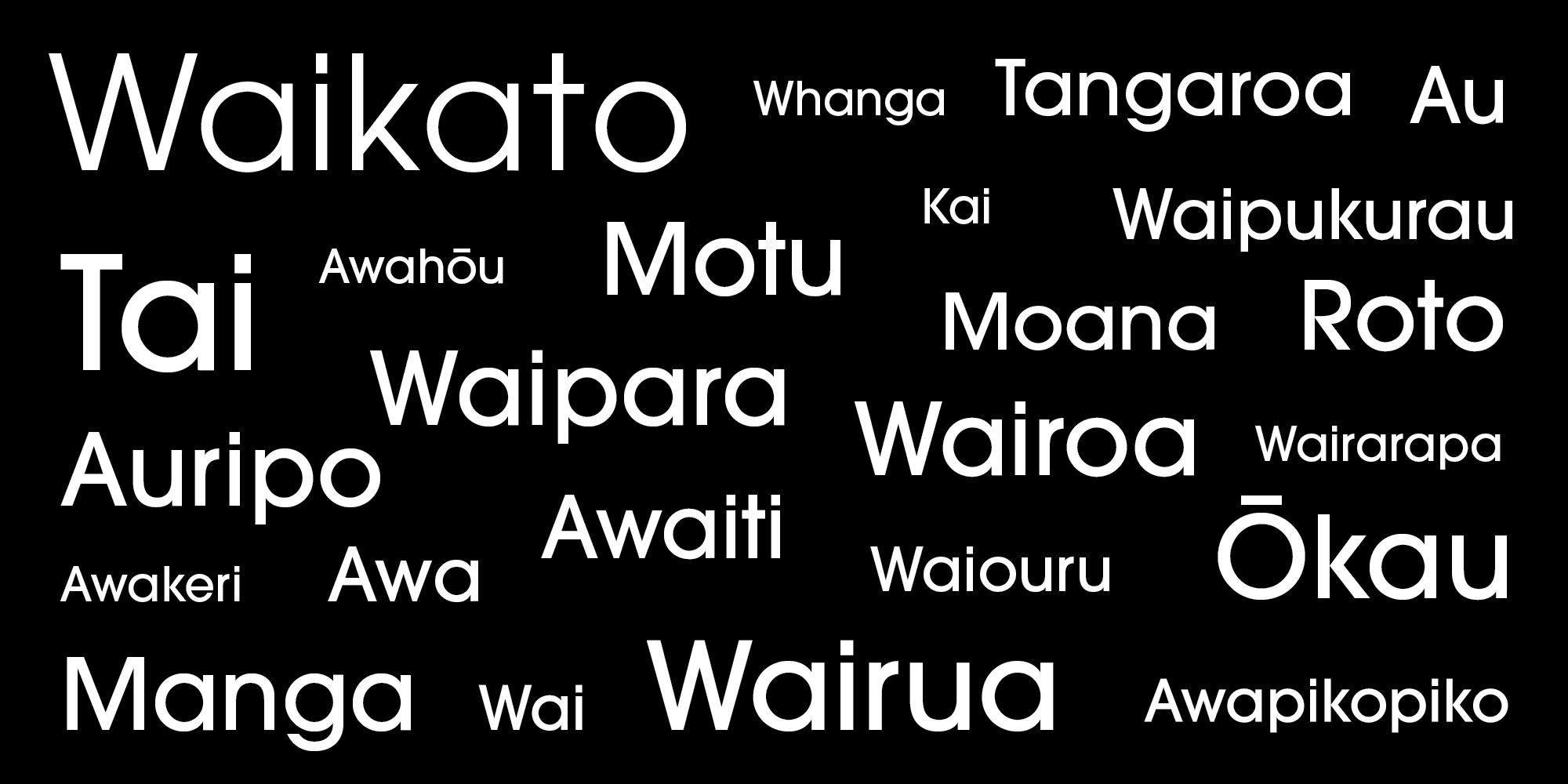English | Māori
LESSON: Importance of a place name
![]()
Description
The focus of this unit is to help children understand place names within their local area as well as the wider Aotearoa. The tamariki will study the events and people that led to the naming of those places.
Place names are usually named after a significant event, an important person or as a commemorate. Tamariki will research the many ways water can be described so we might get a better understanding into place names that we are unfamiliar with.

Achievement Objectives
Te Marautanga o Aotearoa
Te Reo (3)
Listening and speaking
- Student will develop their written language that they are familiar with.
Vocabulary
- Students can correctly select new words for various contexts.
Hauora
- Students are able to express their thoughts for the connection between people and place.
Tikanga ā Iwi
Place and Environment
- Students can explain reasons and pathways that show the connection of people to special places and environments.
Te Aho Matua
Ngā Iwi
-
The student is secure in the knowledge of ancestral links and the hopes and aspirations of whānau, hapū and iwi.
-
The student exhibits personal pride in their whānau, iwi and hapū.
Te Ao
- The student is enthusiastic to learn about traditional Māori values beliefs and concepts and its association to the environment.
- Students display values of kaitiakitanga for the land, oceans and forests and understand the historic tikanga associated with kaitiakitanga over these taonga.
Wai Puna
Whakapapa
-
The whakapapa that arises from the names and the stories.
Mātauranga
-
There is a reason and story to a name and there is knowledge within these stories.
Tikanga
-
To understand the importance of stories that have been handed down.
-
There are tikanga and warnings in these names.
![]()
Learning Intentions
-
Students learn about
-
How places in their local iwi, hapū and Aotearoa were named
-
Our tūpuna and how they were masters of language and could describe water in many ways (stories, history, warnings).
Success Criteria
Students are able to
-
Describe how fve bodies of water in their local area were named
-
Retell the history associated with an area and how it was named
-
Create a word art poster or pātere to show the many and varied words our tūpuna used for water.
Resources
Atlases and maps from the school library.
Blank map of local environment.
Story of Kupe and Te Wheke a Muturangi.
Illustration of Te Whanganui A Tara (as example of local area).
Lessons
Inquiry Question - Where did the names from our iwi and hapū come from, and wider Aotearoa?
Wānanga 1
1. Teacher led introduction into Kaupapa.
- Where did this name come from?
- Who named it?
- What is the story behind the name?
Whole class discussion
Every name usually has a story. Where did their name come from?
Longest place name in NZ –
Taumatawhakatangihangakoauauotamatea turipukakapikimaungahoronukupokaiwhenuakitanatahu
How did this place get its name?
Wānanga 2-5
Names of Waterways
1. Teacher led whole class discussion
For each lesson the teacher can choose a different waterway to discuss how it was named. If for instance, the class discuss the name Te Ika ā Maui, the below are questions to help start discussions
- Where is the name from?
- Who is the name from?
- What is the history behind this name? Explain and expand on what you already know
*Other names to consider for discussion: Taupō-nui-a-Tia, Te Whanganui-ā-Tara, Te Oneroa-a-Tōhe
2. In groups tamariki are to research a waterway that is named after the following
Wānanga 2 -Food
Wānanga 3 -Event
Wānanga 4 -Person
Wānanga 5 -Feature or characteristic
3. Tamariki retells the events that led to the naming of each waterway.
These can be created as role plays, waiata, google animation, book creator.
4. Tamariki retell or present their stories to the class
5. Whole class research on some of the names that our tūpuna gave for the different type of water, and adjectives for water i.e. how water bacts, states of water, descriptions of water, water activities.
The aim is to produce a whole class glossary of words associated with water.
Wānanga 6
Naming your own places
You’ve learnt about how our tūpuna named places because of things that they saw, heard, ate, or did. This lesson is where you can name a few places of your own. Using a map of an area you go to regularly, make up at least 5 names to remember things you’ve seen, heard, eaten or done at those places.
Wānanga 7
Using the research on the names that our tūpuna gave for the different type of water, and adjectives for water, tamariki are to create a pātere or poster on the Wordart website.
Assessment
-
Presentation of their word art poster or pātere.
-
Retell through chosen media, the events of how a town was named.

